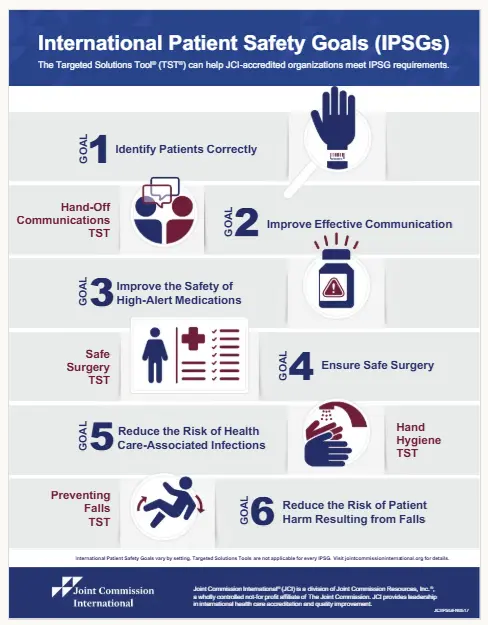International Patient Safety Goals

The International Patient Safety Goals are guidelines established to ensure a safe environment and reduce risks in healthcare.
They are a joint effort of the World Health Organization (WHO) and Joint Commission International (JCI).
The six main goals are: correct patient identification, effective communication, medication safety, surgical safety, infection control, and fall prevention.
Implementing these goals contributes to a safer care environment, reducing patient harm, promoting quality of care, and optimizing health outcomes.
When using our scales and calculators, you will often see references to one of these goals according to the scale or calculator. This aims to reinforce attention to care and promote health education.
The 6 International Patient Safety Goals are:
- Correctly identify the patient
Ensure the patient receives the correct care and procedures, using at least two identifiers (e.g., full name and date of birth). - Improve effective communication
Ensure important patient information is communicated clearly, completely, and promptly, especially during care transitions. - Improve safety in prescription, use, and administration of medications
Reduce risks related to high-alert medications, prescription errors, storage, and drug administration. - Ensure surgery at the correct site, procedure, and patient
Implement preoperative verification protocols, surgical site marking, and "surgical pause" before starting the procedure. - Hand hygiene to prevent infections
Promote hand hygiene practices, antimicrobial control, use of sterile equipment, and environmental control. - Reduce the risk of patient harm from falls
Assess and monitor patients at risk of falling and implement preventive measures such as grab bars, alarms, and supervision.